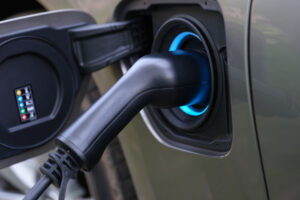
Biden expected to relax EV push, California bill calls for expanding EV charging
By onAnnouncements | Legal
The Biden administration is expected to relax the timeline automakers have to ramp up electric vehicle (EV) production, according to a New York Times article.
In an attempt to combat climate change, the administration proposed last year that 60% of automakers’ new vehicle production be EVs by 2030. The New York Times article says Biden’s new timeline will have EV production increases starting after 2030. The article uses three unnamed sources.
“The change comes as President Biden faces intense crosswinds as he runs for re-election while trying to confront climate change, ” the article says. “He is aiming to cut carbon dioxide emissions from gasoline-powered vehicles, which make up the largest single source of greenhouse gases emitted by the United States. At the same time, Mr. Biden needs cooperation from the auto industry and political support from the unionized auto workers who backed him in 2020 but now worry that an abrupt transition to electric vehicles would cost jobs.”
The article also notes consumer demand has been lower than hoped.
California, which has led the nation in EV sales, moves forward with new legislation aimed at expanding EV infrastructure.
The bill would require the state and local government to develop model permitting tools and best practices for the installation of electric vehicle (EV) curbside charging, says a news release from the office of Assemblymember Kevin McCarty (D-Sacramento).
McCarty introduced AB 2427 on Feb. 13.
“The State of California is leading the way to transition our transportation system to 100% zero-emission vehicles, but the millions of drivers who don’t have access to at-home charging are at risk of being left behind,” McCarty said in the release. “If we want all Californians to have access to electric mobility, we must provide them with convenient and affordable public charging options where they already park: the curb.”
The bill would require the Governor’s Office of Business and Economic Development to create a model permitting checklist, zoning ordinances, and best practices for permit costs and review timelines, according to the bill text. Local governments also would be required to create a model permitting checklist.
Local agencies with populations of 250,000 or more will need to meet the bill’s requirements by 2027. Smaller local agencies will have until 2029.
“This bill would require the Energy Commission to additionally assess curbside charging needs by income level, population density, multi-family housing density, renter density, and geographical area to support equitable overnight charging access and the state’s 2035 electric vehicle adoption goal,” it says. “The bill would require the commission, as part of the assessment, to identify barriers and solutions to support the installation of curbside charging stations, as provided.”
A dozen states — Colorado, Delaware, Massachusetts, Maryland, New Jersey, New Mexico, New York, Oregon, Rhode Island, Vermont, Washington, and the District of Columbia — have adopted California’s Advanced Clean Cars II (ACC II) regulation. It requires 35% of auto sales to be zero-emission in 2026, and 100% by 2035. Some of the states have adopted the rule to be reached by 2032.
While EV sales are increasing, public EV charging infrastructure is still lacking, with the installation of public chargers not keeping up with current and projected sales, according to Auto Innovators.
During the first three quarters of 2023, the number of public EV chargers increased by 26% year-over-year while EV sales increased by 59%.
“If we strategically leverage the public right-of-way, we open up numerous new possibilities to increase communities’ access to EV charging right at the curb,” Louis Tremblay, president and CEO of FLO EV Charging, a California business supporting the bill, said in the release. “But doing so requires planning and collaboration between both the state and local governments. This bill supports that work and will help expand charging access for the Californians that need it the most.”
As the bill works to offer public EV charging to all income levels in California, the U.S. Department of Transportation (USDOT) is working to fix national inequities in transportation.
USDOT announced the update of its 2023 DOT Equity Act Plan last week, according to a USDOT press release. It says the plan is a part of Biden’s executive order “Further Advancing Racial Equity and Support Communities through the Federal Government.”
“The Biden-Harris administration believes that transportation can be a powerful engine of opportunity and that’s why we have made it a priority to bring good infrastructure to all communities including those who have not fairly benefited from past infrastructure investments,” U.S. Transportation Secretary Pete Buttigieg said in the release. “The U.S. Department of Transportation is proud to outline progress we’ve made and further actions we are taking this year to bring the benefits and jobs of transportation to all Americans, whether they live in a big city, a rural community, or anywhere in between.”
The 2023 update will focus on the following five areas:
-
- Wealth creation
- Power of community
- Proactive intervention, planning, and capacity building
- Expanding access
- Institutionalizing equity
“The highlighted actions are efforts DOT is undertaking to address key disparities, including disproportionately high traffic fatality rates among Black people and Tribal communities, high transportation insecurity and cost burdens experienced by low-income households and rural communities and underrepresentation of Black-, Hispanic-, and women-owned small businesses receiving DOT direct contracts,” the release said.
In addition to updating the plan, DOT also released the Transportation Data and Equity Hub.
The release describes the hub as “a one-stop-shop to find tools, metrics, and data to analyze transportation access and the impacts of the transportation system on communities.”
Equity-related data can be explored through maps and other visualizations by visiting Explore the Data, Variable Explorer, or Tools, Maps, and Apps.
IMAGES
Photo courtesy of Ivan-balvan/iStock
